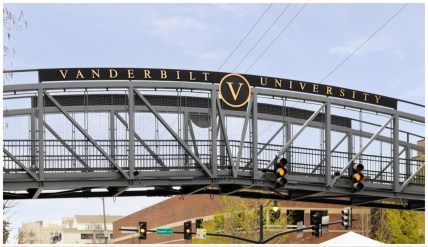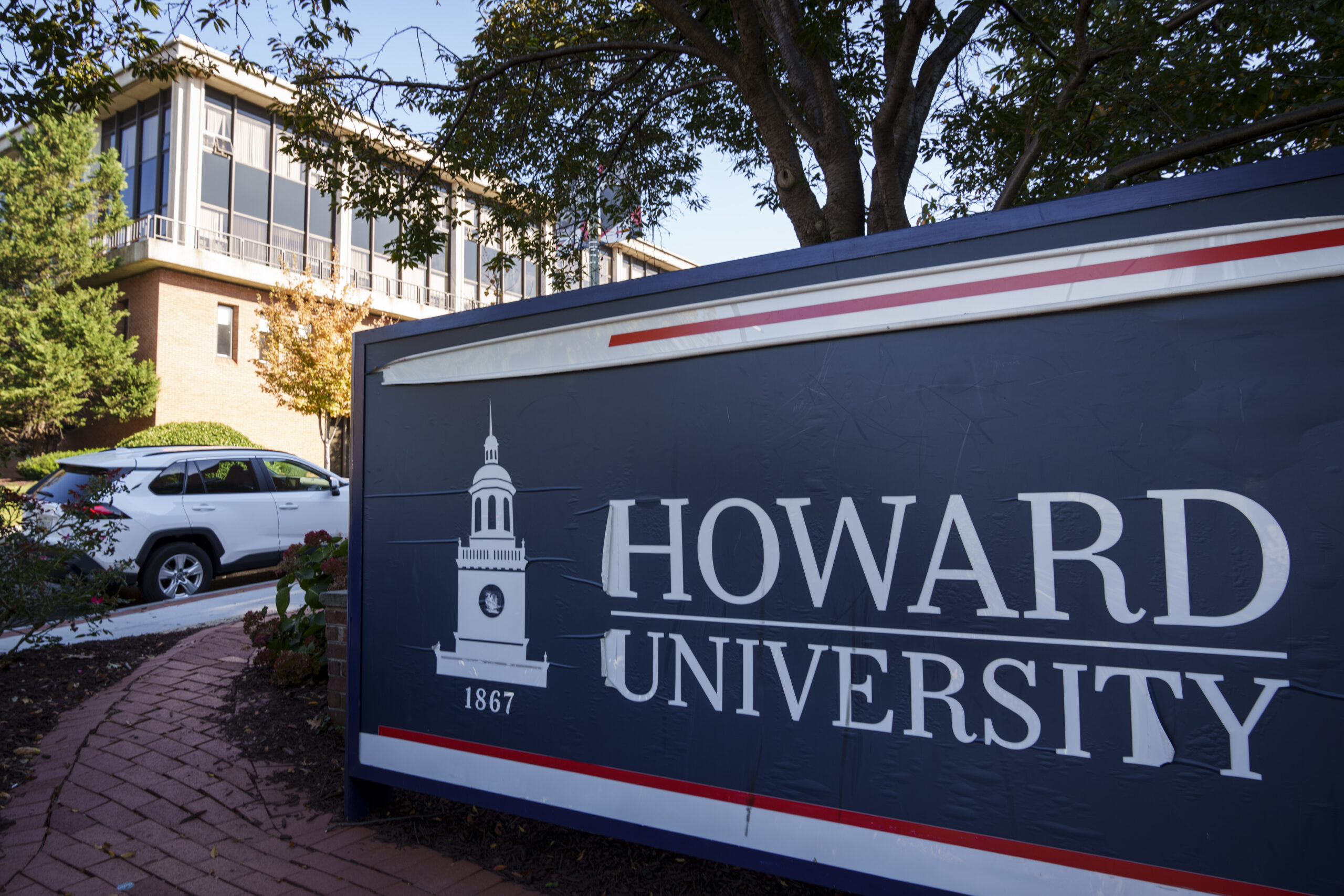States are underfunding land-grant HBCUs, but what can we do about it?
OPINION: Land-grant HBCUs have been shorted billions in funding compared to their white counterparts. But the renewal of the farm bill this year could address those shortages — and advocacy from the Black community can help make sure it happens.

Editor’s note: The following article is an op-ed, and the views expressed are the author’s own. Read more opinions on theGrio.
Historically Black colleges and universities (HBCUs) are severely underfunded and lacking in resources compared to their white counterparts. HBCUs find themselves in a paradox as they experience historic increases in enrollment, yet as their predominantly white counterparts enjoy multibillion-dollar endowments and vast resources — billions of dollars in some cases — HBCUs are financially depleted and under-resourced with only millions.
A prime example of HBCU underfunding is among the nation’s land-grant institutions, which Congress established with the Morrill Acts of 1862 and 1890. The federal government allocated federal land to the states to fund and endow land-grant colleges.
Looking at the reason for the resource disparity between predominantly white institutions (PWIs) and the 19 HBCUs that are land-grant institutions, it all comes down to a racial funding gap. Some would call it theft, as in the theft of billions of dollars in federal and state government money to Black institutions. This is systemic racism 150 years in the making — complete with receipts. And this is why so many land-grant HBCUs are struggling. But the federal farm bill could change all that.
In 1862, the Morrill Land Grant College Act, named after Senator Justin Morrill of Vermont — provided each state with 30,000 acres of public land and funded a system of public colleges and universities — both brand new and existing colleges — to “benefit the agricultural and mechanical arts.” These institutions received land and money for their “endowment, support and maintenance.” Some examples of these land-grant institutions are Clemson, Cornell, Iowa State, MIT, the University of Missouri, Nebraska, Rutgers, Washington State and the University of Wisconsin. This was the federal government’s first foray into funding higher education.
However, in 1890 a Morrill Act 2.0 was necessary to incorporate Black people. “What was not anticipated by … Morrill was that some states would establish these land grants and deny admission to African Americans,” Tennessee State Rep. Harold Love, Jr. told theGrio. Rep. Love noted that as the country sought to deal with a defeated South after the Civil War, a second Morrill Act would look exactly like the first, with the exception that states would be prohibited from denying admission to a university based on race.
The 1890 Morrill Act gave birth to 19 HBCUs: Alabama A&M, Alcorn State, Central State, Delaware State, FAMU, Fort Valley State, Kentucky State, Langston, North Carolina A&T, Prairie View A&M, South Carolina State, Southern, Tennessee State, Tuskegee (the only private land-grant HBCU), University of Arkansas at Pine Bluff, University of Maryland Eastern Shore, Virginia State and West Virginia State.
And while states are required to match every dollar the federal government paid to these Black land-grant universities, some states refused to follow the one-to-one match formula and have underfunded these HBCUs for years. In some years, these schools received no state funding. And without matching state funding, these colleges could lose their federal funding unless they receive a waiver from the federal government. Meanwhile, states consistently meet the one-to-one funding requirements for predominantly white 1862 land-grant colleges and often exceed them, even as they defund 1890 HBCUs in the same state.
State Rep. Love — taking the mantle from the work of his father decades earlier in addressing the unequal funding of Tennessee State University — got the data and learned that over the years, the HBCU had been underfunded by $544 million since 1957, forcing Tennessee State to forgo building maintenance for 20 years, creating more problems. “That was $544 million that could have gone to the endowment, teachers’ salaries, scholarships. It could have gone to a lot of things,” Love said.
“It’s a situation where you know something’s there, but you just can’t put your finger on it,” the Nashville lawmaker added. ”Folks wouldn’t know because it’s like being sick. You don’t feel well but you can’t pinpoint what it is. What we’re doing now is diagnosing and pinpointing so they can find a cure.”
According to a 2022 Forbes investigation, the land-grant HBCUs are owed a minimum of $12.8 billion over the past three decades, with a minimum of $1.9 billion for TSU, which includes opportunity costs. These institutions suffer from a lack of investment from private industry as well.
This funding gap has real implications for HBCUs as they seek to rise in the ranks among research universities, top-tier institutions that require large endowments and Ph.D. faculties, notes Dr. Mortimer H. Neufville, CEO and president of the 1890 Universities Foundation. The 501(c)(3) nonprofit organization supports education, outreach and academics for the 1890 land-grant universities. “We are the best kept secret in the states. They need to know and should know,” Neufville said of the land-grant HBCUs. “We’ve always been asked to do more with little. That continues today. We’ve always been asked to pull ourselves up by our bootstraps. But first, we need the boots.”
According to State Rep. Love, the disparities are “baked into the system” and put in place from the start. “This is where we have to educate our colleagues and those who may think we are screaming racism all the time. When you start legislating that there is going to be inequity, you have to have a critical moment to occur for it to be changed.”
Love believes the public will have opportunities to talk to legislators about next steps. “It has to start with a conversation. I was blessed that I had a blueprint from my father and took it a step further,” he said, offering a toolkit for other HBCUs to use as they attempt to reclaim the resources they were denied. There is hope, as the state of Maryland settled with its four HBCUs for $577 million following a 15-year lawsuit alleging the institutions were inequitably resourced.
And TSU is receiving $250 million to revitalize its campus infrastructure.
Meanwhile, the 2018 farm bill — the Agriculture Improvement Act of 2018, which secured resources for the land-grant Black colleges and universities with $40 million for scholarships — is set to expire this year. The legislation is the primary federal tool for funding land grant institutions, including the land-grant HBCUs. Neufville believes a renewed farm bill later this year is key to addressing the underfunding of the 1890 institutions.
“The opportunity is there to look at the farm bill and ask Congress, ‘So how committed are you to increase social mobility, help underserved populations, [provide] food access for all and health access for all?’ A lot of this can be addressed in the Farm Bill, from urban to rural, from production to consumption,” he said. “We have to make sure our voices are heard. Growth for us demands tremendous more resources, and people have to stop thinking we can survive off crumbs when we should get a slice of the pie,” Neufville added.
These historically Black land-grant universities are critical institutions in their communities, serving as the bedrock of local economies, assisting with programs to address food insecurity and gentrification, providing access to credit and broadband, uplifting blighted communities with urban gardening and engaging with the community. But they need money to do this, and the farm bill provides the solution.
According to Dr. Antonio McLaren, vice president of innovation and program implementation for the 1890 Universities Foundation, advocacy in the Black community is crucial to secure funding for these land-grant HBCUs. McLaren believes we must work together to ensure the needs of these institutions are met.
“Participate in advocacy. Reach out to your state representative, talk about the importance of 1890s in your community. On the federal level, reach out to your U.S. representative or senator,” McLaren said. “Are you an alumni of an 1890 university, and how has that been critical to your career? Those who reside in states with an 1890 university, use our voice collectively to make sure 1890s continue to receive state support and funding. When one 1890 succeeds, that is good for all institutions” he added.
With billions of dollars withheld from these schools over the years and the pressing need for this funding now, nothing less is at stake than the future of Black institutions and the future of the Black community. Federal and state governments, the private sector, HBCU alumni and others have a role to play in sustaining these resource-deprived institutions.
“We need a future generation of scientific professionals in the agricultural industries and community-based organizations, a trained generation to continue the work that many professionals have laid the groundwork for,” said Dr. McLaren. “The future talent pipeline is critical.”

David A. Love is a journalist and commentator who writes investigative stories and op-eds on a variety of issues, including politics, social justice, human rights, race, criminal justice and inequality. Love is also an instructor at the Rutgers School of Communication and Information, where he trains students in a social justice journalism lab. In addition to his journalism career, Love has worked as an advocate and leader in the nonprofit sector, served as a legislative aide, and as a law clerk to two federal judges. He holds a B.A. in East Asian Studies from Harvard University and a J.D. from the University of Pennsylvania Law School. He also completed the Joint Programme in International Human Rights Law at the University of Oxford. His portfolio website is davidalove.com.
TheGrio is FREE on your TV via Apple TV, Amazon Fire, Roku, and Android TV. Please download theGrio mobile apps today!



